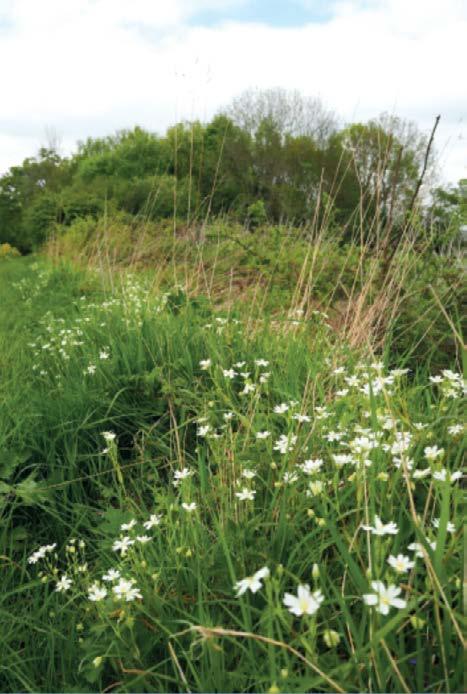
4 minute read
Farmer Focus - Ed Reynolds
FARMER FOCUS
ED REYNOLDS
Advertisement
Harvest 2022 arrived fast and was completed without a pause. The wheats yielded 8.8t/ha, with only applied 155kg/ha bagged N applied, which was 16% less than 14yr average. 85% of this was direct drilled and we are seeing soil structure continue to improve. The oilseed rape yielded 3.3t/ha, with the highest yielding field consisting of a 3-way companion crop until January. The gross margin of this crop is hard to match with other break crops, so we have opted to roll the dice again and plant more for 2023. As I write on 20th September, the rapeseed with companion crop is experiencing much less CSFB attack, perhaps showing a benefit of diversity in a cash crop system.
This summer will be remembered on our farm for being hot and dry. We were fortunate to receive 24mm of rain on 25th August, after a period of nearly 10 weeks without rain. The dry weather threw a spanner in the works for cover crop / catch crop establishment. Indeed, we only drilled half the catch crops we intended. Because our system is linear: annual cash crop followed by cover crop sequentially, once harvest was complete, the soils were without a living root, bare and exposed to the sun. These were ‘baked out’ causing harm to the soil life that we are trying to encourage. This made me aware of the flaws in our system, where we need to look at overlapping plant cover and more living mulches. Soil Testing As a result of so much recent conversation around carbon in agricultural soils, with the backdrop of climate change and the opportunity to enter carbon certificate programs, we wanted to start testing our soil (Farmer Focus article - Apr 2022). The results of our original tests were quite shocking. Soil scientists look at Soil Organic Carbon (SOC) as a proportion of total clay content in the soil, so the higher the clay content, potentially the higher capacity to store stable carbon. One group of studies suggests a very good ratio for arable soil might be 1:8 carbon to clay, where as a degraded soil is 1:13 (Prout et al, 2020). The results from our first 24ha field showed a 1:16 SOC:clay content – in other words highly degraded. This leads to the question of how it degraded to this point? To our best knowledge, this high clay content field has been in arable production since 1940’s, when American crawler tractors began to be imported as part of the increase in domestic production during WWII. It would probably have had animal manure rotationally applied until 1960’s, when livestock left this farm. Since then, it has been in arable production, using intensive cultivation and artificial fertiliser. You can see a lighter soil colour on the sloping parts of the field in the recent satellite imagery, indicating lower organic matter and implying soil erosion. I agree it is an assumption, but a safe one to say that the SOC level pre-1940 would have been significantly higher. Given the soil test information, this leads to a bigger question - is my job as a farmer to grow crops safely and profitably for the world market, or is there a moral imperative to stop degradation of my soil, and even try to improve it? To quote from the summary of the periodical article: ‘Many arable soils in England and Wales evidently have a substantial SOC deficit, suggesting a significant opportunity to increase SOC storage to both improve soil conditions and sequester carbon’ (Prout et al, 2020). Interestingly, the field we tested is not one of our ‘worst’. It has been in no-till / very shallow till for 5 years and is functioning well under this new regime. We hope to use this and other regenerative practices to try and improve its carbon content – no danger of reaching carbon saturation point anytime soon. We have logged the sampling points and will revisit them in 10 years time.
Could you explain this in more detail?

Theodor Leeb: On the high-yield sites stubble cultivation is usually carried out after the harvest to mix in the straw. After a few days or weeks volunteer crops and weeds emerge. I.e. the field more or less is green all-over. Spotting does not make sense as the plants are too close to each other. So you would have to treat the whole area and could not rely on point application. In dry regions where no-till farming is very common this is different. There is no tillage after the harvest. As it is very dry there are little weeds or catch crops. And in this case, you can – instead of spraying all over – work with a camera system in a targeted way for example to save costs when using glyphosate for spraying the individual plants.









